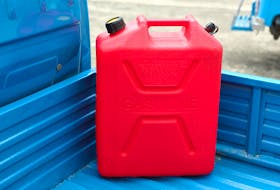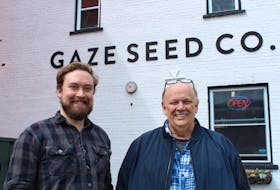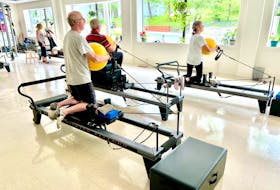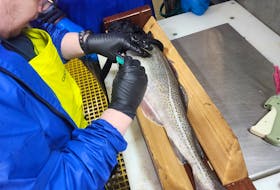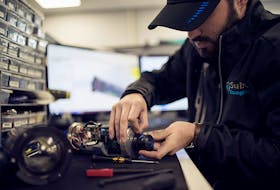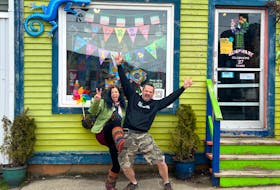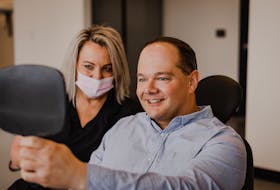HOLYROOD, N.L. — There’s a new perk in Katleen Robert’s research life.
The Marine Institute professor has the means to observe what’s happening on the ocean’s floor in Conception Bay simply by logging on to her computer. Before last month, it wasn’t that easy.
“Right now, I’m getting a picture, a little video clip, of what’s sitting on the seafloor every hour,” she told The Telegram. “Which is a rate that I would never be able to get if I had to physically be present there. Even going (in a boat) four times a year is a lot.”
This is all thanks to a new $750,000 seafloor observatory. It was installed last month and is located four kilometres north of the Marine Institute’s Holyrood marine base, 85 metres below the surface. The observatory takes up twice as much floor space as a standard pallet and is just over five-feet tall.
Connected to a fibre-optic cable, it monitors currents, waves, water temperature, salinity and underwater sounds and shares this data in real-time. It’s also equipped with a high-resolution camera developed by Newfoundland ocean-tech company SubC Imaging. The camera collects time-lapse video footage from the ocean’s floor.

Easier access to data
This tool makes data collection easier, especially in rough weather. Last year, Robert had a student working on a pilot project that required collecting samples from the ocean in each season.
“In Newfoundland, the weather can be quite terrible, and even in Holyrood, we can have ice,” said Robert, Canada Research Chair in Ocean Mapping for the Marine Institute’s School of Ocean Technology. “So actually, from January to March, we were not able to go out. There (were) problems with the gear, or the winds were too high. We had some ice. We were never able to see what was happening in winter, and that’s pretty common in northern climates like we have here.”
The observatory lets researchers watch marine life in a natural state, offering insight into how they eat and interact with other organisms, and paints a clearer picture of what’s happening in the ocean.

Partnership
The Marine Institute — an affiliate of Memorial University — partnered with the University of Victoria’s Ocean Networks Canada on the project. The latter has been involved in setting up these observatories on the East and West Coasts and Arctic. It was responsible for the observatory’s design and build.
“We monitor everything that’s possible in the oceans,” said Kate Moran, CEO for Ocean Networks Canada, highlighting the movement of whales, tsunamis, microbes and earthquakes as examples. “It’s advancing a whole range of scientific research across all the disciplines that are active in the ocean.”
In the past, data collected through the observatories has informed ocean management decisions, Moran said. She likes the fact her organization got a chance to partner with a group like the Marine Institute that, much like Ocean Networks Canada, is dedicated to the advancement of ocean engineering.
She also appreciates the observatory’s dual purpose. In addition to monitoring ocean conditions and marine life, it will help industry test products designed to withstand harsh cold-water environments.
“The Holyrood installation is really marrying that world of monitoring the ocean for scientific research, but then also using that platform to help Canada’s blue economy,” she said. “Our strength is in small, sensor-based, small-medium-sized enterprises that develop some of the world’s best ocean sensors ... And as industry develops new sensors, we get to monitor the ocean better too.”

Lab work
Robert oversees the 4D OCEANS Lab as part of the international Marine Environmental Observation, Prediction and Response Network. They’re collecting five minutes of video every hour and checking it to see how organisms, including snow crab, are interacting and to monitor any changes as phytoplankton begins to bloom in the spring.
It may ultimately be a pipedream, but Robert would love to one day have a docking station on the observatory for an autonomous underwater vehicle.
“The technology is there, but I don’t think it’s been done for a scientific purpose at the moment. I think it’s still more on the engineering side of the research,” she said.
“But, for example, with our camera, we only see a few metres of the seafloor ... With an autonomous underwater vehicle, we can start to be able to sample a wider area and take pictures of a wider area. Then you could come back to the observatory, download all the pictures or data and then recharge at the same time and go again the next day. That would really increase the amount of information.”
Andrew Robinson is a business reporter in St. John's.
[email protected]
Twitter: @CBNAndrew

